Birthdays with Les Paul
A couple years back on my birthday, my family gave me a 2012 Epiphone 1960 Les Paul Tribute Plus. I love that guitar – and have played it nearly every day for two years. Aside from some cosmetic issues, the only real negative about the Tribute Plus is that it’s heavy- it’s a solid body with no weight relief. I’ve been playing many long gigs and rehearsals with my band the Drop Daddies, and the weight really does takes its toll.
This year for my birthday, my wife again suggested I get a new guitar. I like this tradition!! This time, I chose a Gibson 2013 Les Paul Studio. I purchased it from Sweetwater– they had a great “last year’s model” price – under a grand, with a hard case. And their photo gallery selection process took a lot of the gambling and guesswork out of the online purchase. Their service was awesome, the guitar arrived exactly as pictured, and it was nicely set up (though for some reason they had put 9’s on it, so my first job was to change it to 10’s and redo the setup).
The Les Paul Studio is a very effective compromise in features vs. price. It’s very similar in quality and playability compared to the higher-end Gibson’s- only really lacking some cosmetic fanciness. With Gibson Les Pauls, you’ll pay 2 or 3 times the price of the Studio before see body/neck bindings, figured top woods and elaborate inlays.
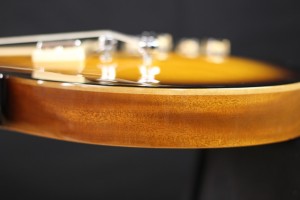 The top is two-piece mahogany with a carved maple cap. The grain is nicely bookmatched and the vintage sunburst finish is nitrocellulose, and glows nicely. I don’t really miss the bindings at all- the contrasting maple and mahogany of the top, and granadillo and mahaogany of the neck are gorgeous on their own.
The top is two-piece mahogany with a carved maple cap. The grain is nicely bookmatched and the vintage sunburst finish is nitrocellulose, and glows nicely. I don’t really miss the bindings at all- the contrasting maple and mahogany of the top, and granadillo and mahaogany of the neck are gorgeous on their own.
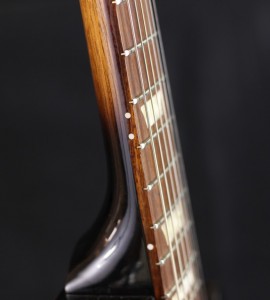 The neck is mahogany, 12” radius, and glued in with a mortise-and-tenon joint. The frets are perfectly leveled, and smoothly crowned and polished. Using my fret rocker up the neck, I could only find one slightly-high fret up around the 15th fret – nothing to worry about. I’ve never seen a neck so perfect, straight from the factory.
The neck is mahogany, 12” radius, and glued in with a mortise-and-tenon joint. The frets are perfectly leveled, and smoothly crowned and polished. Using my fret rocker up the neck, I could only find one slightly-high fret up around the 15th fret – nothing to worry about. I’ve never seen a neck so perfect, straight from the factory.
The fretboard is granadillo, a Guatemalan hardwood similar to rosewood and related to cocobolo. I’m not one to demand perfectly black ebony fingerboards- I love the rich reddish brown color of the granadillo.
The inlaid trapezoids on the neck are absolutely perfect- in contrast to the sloppy inlays on the Epiphone.
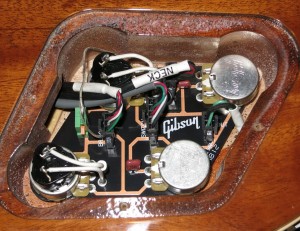 Opening up the control cavity, I was surprised to see a simple PCB in there. This allows the factory to use custom wiring harnesses – each pickup wire bundle ends in a plug which is connected to a header on the PCB, and the pots and caps are mounted directly to the board, interconnected with PCB traces. A vintage purist may complain, but I see nothing much to fault here – it’s clean, and solid as a rock. The only issue is that tweaks and mods will be a bit more challenging than with a typical open wired circuit. Replacing the tone caps would be simple. But when it comes time to replace the pots, a little more care will have to be taken to match the geometry of the new pots to fit the PCB.
Opening up the control cavity, I was surprised to see a simple PCB in there. This allows the factory to use custom wiring harnesses – each pickup wire bundle ends in a plug which is connected to a header on the PCB, and the pots and caps are mounted directly to the board, interconnected with PCB traces. A vintage purist may complain, but I see nothing much to fault here – it’s clean, and solid as a rock. The only issue is that tweaks and mods will be a bit more challenging than with a typical open wired circuit. Replacing the tone caps would be simple. But when it comes time to replace the pots, a little more care will have to be taken to match the geometry of the new pots to fit the PCB.
The tone pots are Gibson-branded 500k, and the tone caps are .022uF. The volume pots are push-pull and split the coils in the pulled position. They appear to be 500k linear taper based on a couple readings on the multimeter– but I cant be 100% sure without dismantling the board.
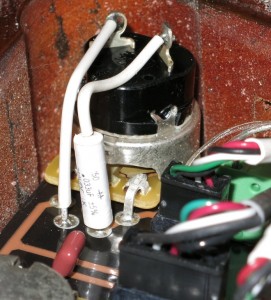 The coil splits are implemented via a .033uF cap to ground. This is known as Gibson’s Fat Tap – in which most of the second coil’s signal is sent to ground, but some of the low end is retained. This provides some hum cancellation and a more balanced sound in the single coil position, with minimal volume drop compared to the dual-coil humbucking position.
The coil splits are implemented via a .033uF cap to ground. This is known as Gibson’s Fat Tap – in which most of the second coil’s signal is sent to ground, but some of the low end is retained. This provides some hum cancellation and a more balanced sound in the single coil position, with minimal volume drop compared to the dual-coil humbucking position.
One of the issues with the series/parallel push-pulls on my Epiphone is the significant drop in volume when switching to parallel, so this is a nice improvement. Parallel sounds very thin- quite different from these coil splits. Both are useful sounds, but the fat tap coil split is certainly more Strat-like.
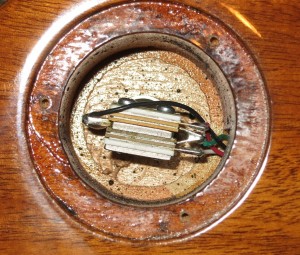
I find myself bumping it accidentally a bit more frequently than I did on the Epiphone.
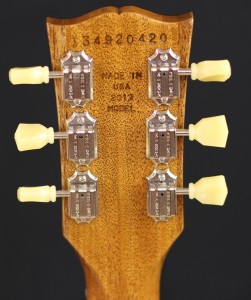
The truss rod is super smooth- in fact it’s the nicest truss rod adjustment I’ve ever encountered.
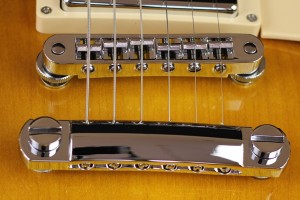
The pickups are Gibson 490R neck and 498T bridge humbuckers. These are intended to be a little hotter with more presence in the mids and highs, compared to the Classic 57’s on the Epi 1960 Tribute Plus. They are 4-wire, allowing for the push-pull coil splitting, and they’re reverse wound, reverse polarity relative to each other, providing hum cancellation when using the single coils in the middle switch position. They sound great in both humbucking and split single coils positions.

At nearly twice the price, is the Les Paul Studio worth the extra cash, compared to the Epiphone 1960 Les Paul Tribute Plus? Hard to say. I love the feel of the neck, the reduced body weight, the aggressive but versatile sound, the sweet cosmetics and the overall quality of workmanship. And I like that it’s made in the USA.
Thanks again to Chunling and my girls for humoring my obsession with the guitar, and joining me in my excitement with this new Les Paul. Feeling very lucky…
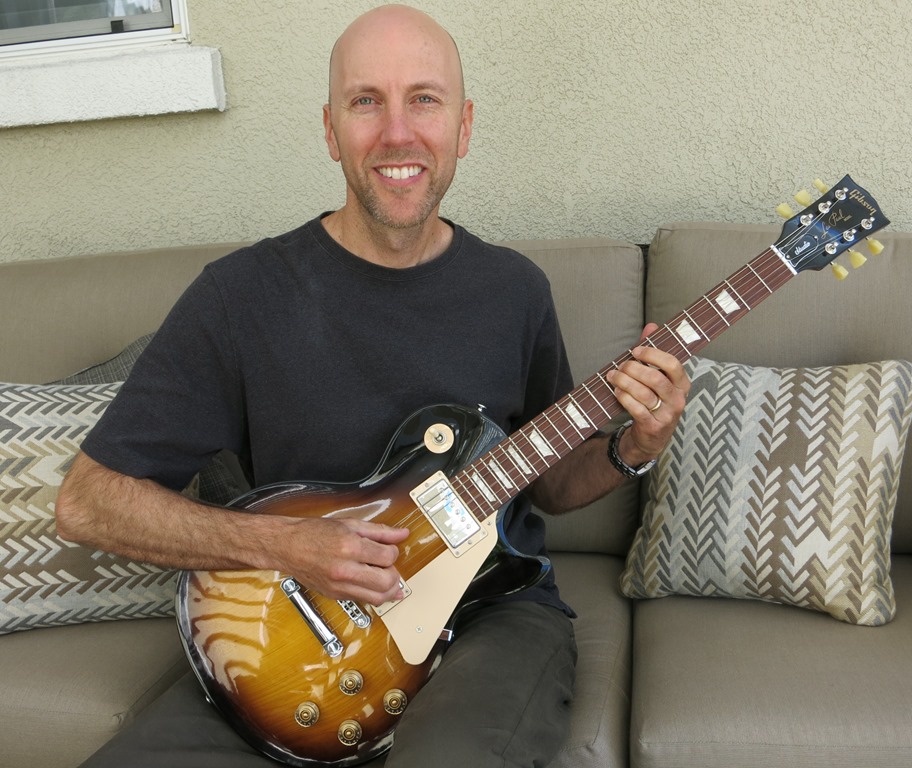
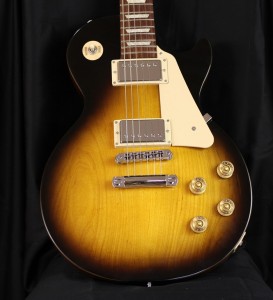
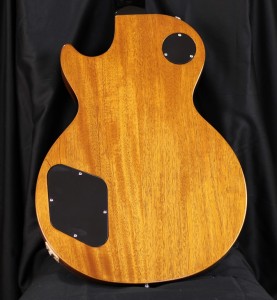
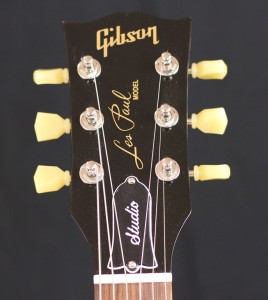
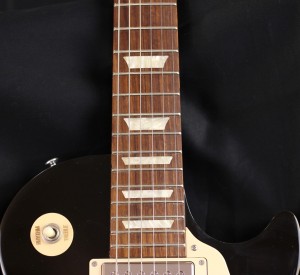


July 21, 2014 @ 4:43 pm
That wonderful wife of yours,,,, does she have any sisters?
July 25, 2014 @ 12:26 pm
Haha! I am very fortunate 🙂
-John
2013 Gibson SG “Future Tribute” - Planet Z
March 29, 2017 @ 3:31 pm
[…] a tradition of birthday guitars, I received my new Gibson SG this week. This is the 2013 “Future Tribute” […]
Tenderly, Nitrocellulose - Planet Z
March 31, 2017 @ 10:29 pm
[…] Gibson Les Paul Studio has a gorgeously lustrous glossy nitrocellulose lacquer finish. This is a premium finish. Or so I […]